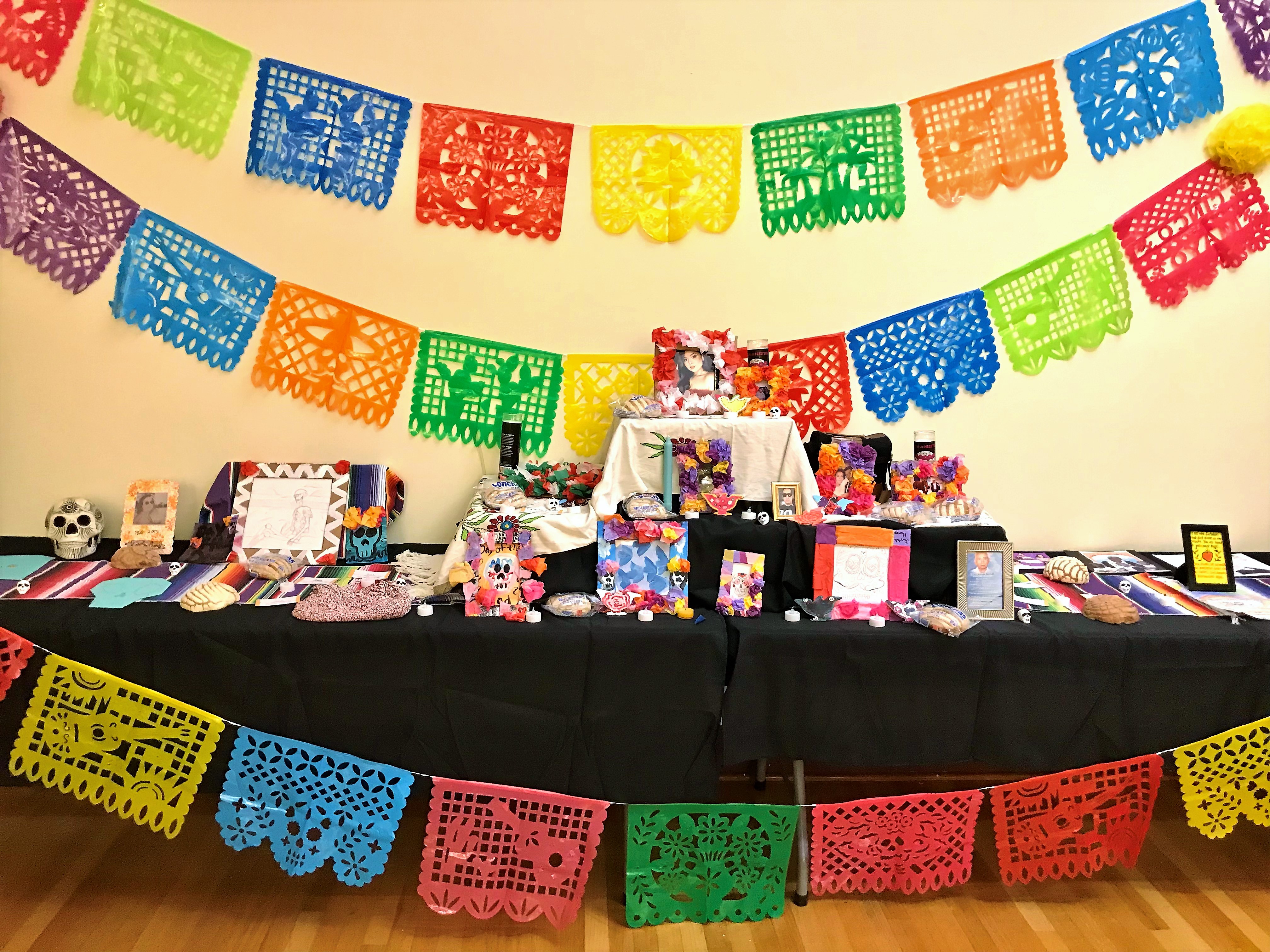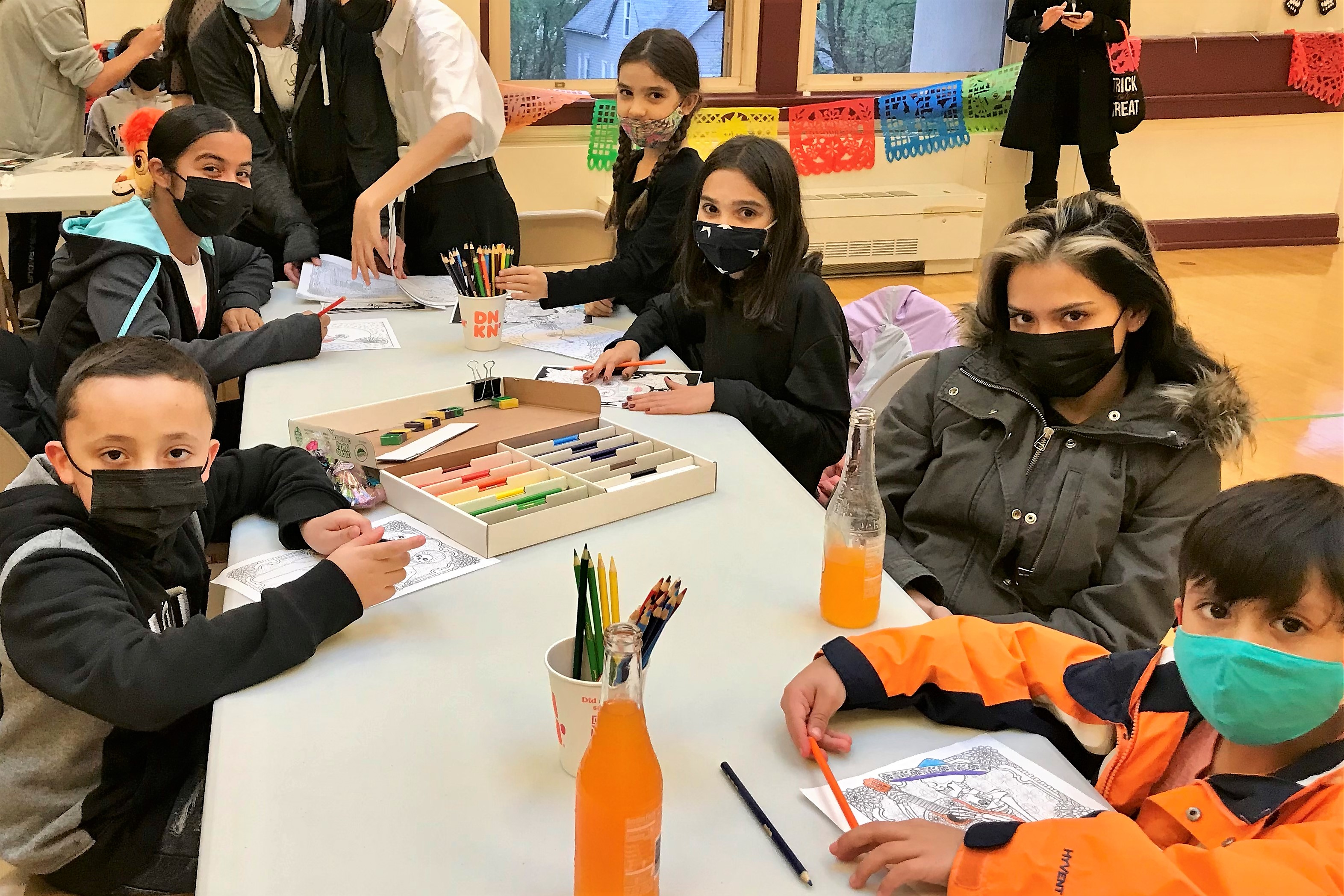Day of the Dead is actually a two-day holiday in Mexico when families celebrate life and death simultaneously. From October 31 – November 2, people create ofrendas (or offerings) adorned with items such as foods, photos and items once enjoyed by family members who have died. This year, in the wake of COVID and also their Fund for Teachers fellowship, Rebecca Gauna and Sasha Villagrana decided to host a community-wide Day of the Dead Celebration at Chicago’s Robert Lindblom Math and Science Academy High School.
With their $10,000 FFT grant last summer, Becci and Sasha researched in Nayarit, Oaxaca, and Chiapas, Mexico, indigenous history, traditions, and folklore to inform learning for a Latino culture course, facilitate collaborations with English Language Learners in the special education program, and engage Spanish speaking parents. (Learn more about their experiences at Becci and Sasha‘s post-fellowship reporting.)
This fall, they began implementing their own learning with their students by creating a religious syncretism curriculum for their Latino Culture Colloquium. They also created an advisory lesson that was used school wide to talk about cultural identity. The community-wide Day of the Dead Family Night last week featured an ofrenda (above), performances by the Latino Dance Crew, and five craft stations in which students and their families created sugar skulls, made marigold flowers, and had their faces painted. Students led each activity and explained the significance and symbolism at each station.
“Many Mexican Americans who were born in the United States (including our students) often have a deep sense of feeling connected to Mexico yet have only visited a handful of times,” said Sasha. “The variety of the culture and languages we experienced within each state of Mexico really is so diverse that it is often hard for many Mexican Americans to comprehend or even understand how different it can be. This experience opened my eyes to how diverse the culture and language of Mexico really is and how little many of our students may even know about their family origins.”
 “Indigenous groups in Mexico have been oppressed for centuries and this is clear when looking at poverty, access to healthcare, levels of education etc. in highly indigenous areas in Oaxaca and Chiapas,” Becci added. “Their stories too often go unheard when examining the history and culture of Mexico. We want to highlight the importance of indigenous subcultures within the dominant culture of Mexico and bring back inspiration for how marginalized communities maintain their culture and identity.”
“Indigenous groups in Mexico have been oppressed for centuries and this is clear when looking at poverty, access to healthcare, levels of education etc. in highly indigenous areas in Oaxaca and Chiapas,” Becci added. “Their stories too often go unheard when examining the history and culture of Mexico. We want to highlight the importance of indigenous subcultures within the dominant culture of Mexico and bring back inspiration for how marginalized communities maintain their culture and identity.”
Going forward, Sasha and Becci plan to create an interdisciplinary project between the school’s Latino Culture Colloquium, students in the school’s special education program, the art department and the library through a bilingual story time. The teachers also established contacts with a nonprofit in Chiapas called Sueninos and a nonprofit in the Puerto Vallarta region called Entre Amigos through which will participate in language exchanges and cultural “intercambios,” as well as topics around dual identities and immigrant rights. We will also pursue our relationship with the Mexican Museum of Art in order to conduct an art and identity workshop.
“Our fellowship provided us with pictures, anecdotes, and most importantly, local perspectives and insights into our course units which will help students feel pride and connection with their heritage and engage with the material,” said Becci.
[minti_divider style=”1″ icon=”” margin=”20px 0px 20px 0px”]
Becci Gauna has taught Global Civics, Honors Psychology, Honors Sociology, US History, and World History. She has also helped design and develop her school’s Latino Culture program and sponsors the school’s Latino Dance team. Sasha Villagrana has been a New York City public alternative high school teacher for six years — two of which were in prison to a range of incarcerated youth populations facing the most severe challenges. She has also served Lindbom’s bilingual coordinator, foreign language department chair, and has taught the Latino Culture Colloquium, as well as Chinese.



